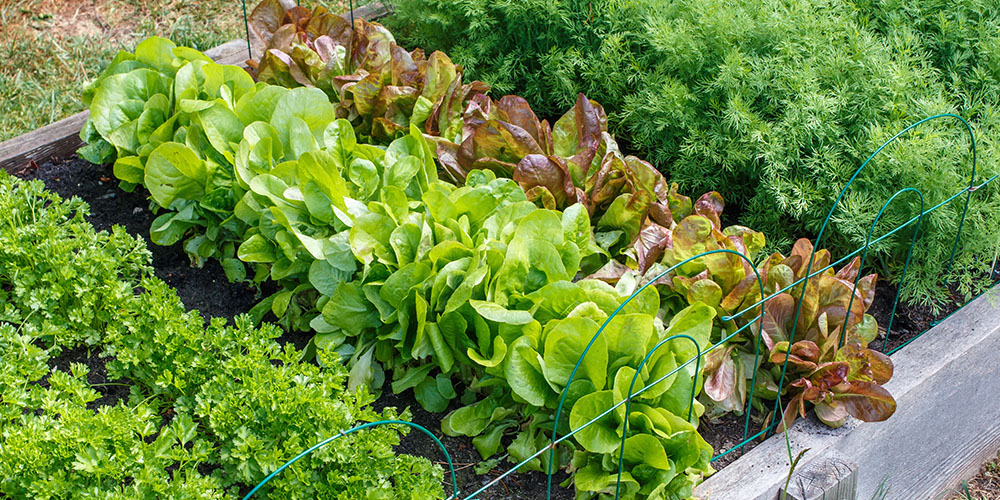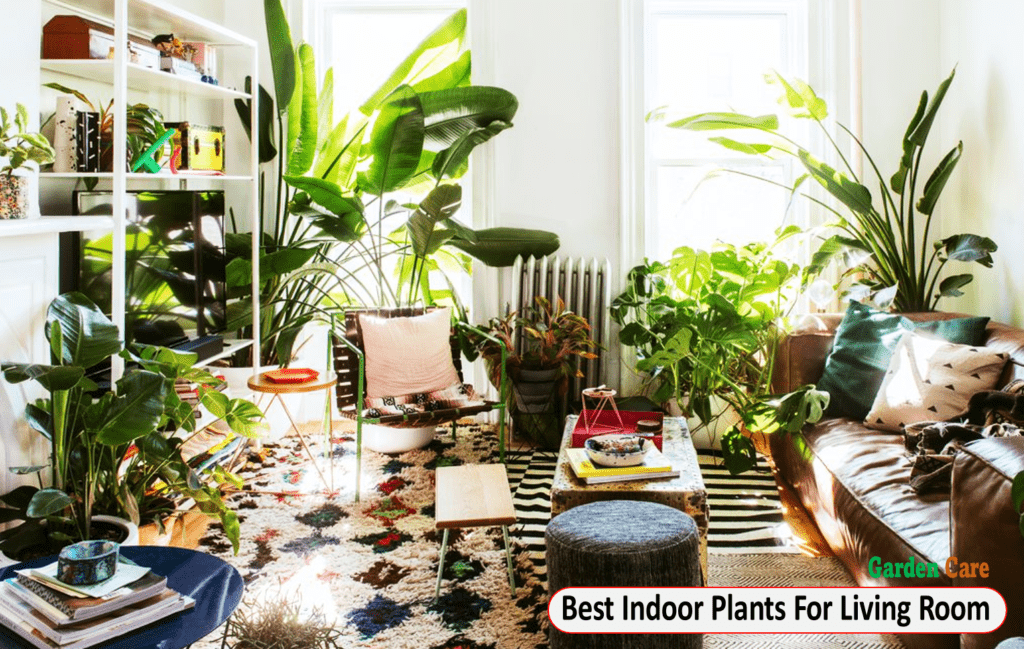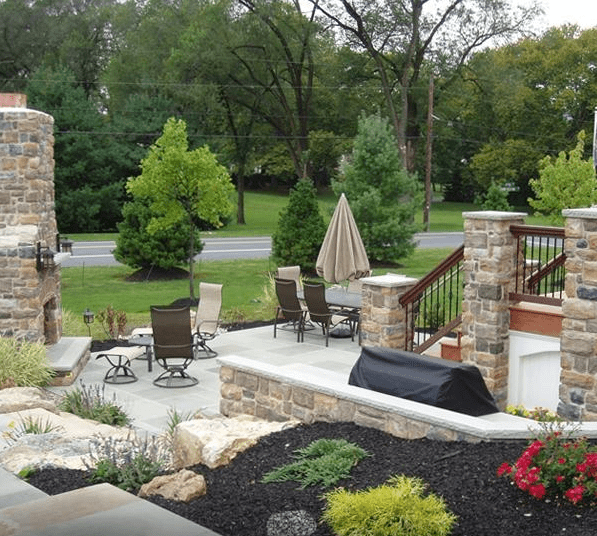For Vegetable Garden Layout Plans And Spacing, it is essential to consider the types of vegetables being grown and their specific spacing requirements. Proper planning can maximize productivity and prevent overcrowding, which can lead to poor growth and disease.
By understanding the needs of each vegetable, gardeners can create a well-organized and efficient garden space that optimizes yield and promotes healthy plant growth. This article will provide valuable insights into how to plan your vegetable garden layout and appropriately space your plants to ensure a thriving and fruitful garden.
[ez-toc]
1. Importance Of Layout And Spacing In Vegetable Gardening
When it comes to successful vegetable gardening, having a well-planned layout and proper spacing is of utmost importance. A thoughtful and strategic layout ensures that your vegetable garden is not only visually appealing but also functional and efficient. Proper spacing, on the other hand, allows each vegetable plant to maximize its potential, resulting in healthier and more productive crops.
1.1 Benefits Of A Well-planned Layout
In a well-planned vegetable garden layout, each plant is strategically placed to optimize sunlight exposure, air circulation, and water drainage. This careful arrangement offers several benefits:
- Optimal Sunlight: Placing taller plants on the southern side of your garden prevents overshadowing and ensures that each vegetable receives the necessary sunlight for photosynthesis.
- Improved Air Circulation: Adequate spacing between plants allows for better airflow, reducing the risk of diseases caused by excess moisture or stagnant air.
- Efficient Water Drainage: A well-thought-out layout ensures that water drains evenly and prevents waterlogging, which can lead to root rot and other plant diseases.
1.2 Significance Of Proper Spacing
The proper spacing between vegetable plants plays a crucial role in their growth and development. Here are a few reasons why spacing is significant:
- Healthy Growth: Adequate spacing prevents overcrowding, allowing each plant to establish strong root systems and access essential nutrients from the soil.
- Reduced Competition: Proper spacing minimizes competition for resources like water, sunlight, and nutrients, ensuring that each plant has ample access to what it needs.
- Pest and Disease Prevention: When vegetable plants are spaced correctly, air can circulate freely, keeping the foliage dry and reducing the risk of fungal diseases and pests.
By understanding the benefits of a well-planned layout and the significance of proper spacing, you can create an organized and thriving vegetable garden that yields bountiful harvests throughout the growing season.
:max_bytes(150000):strip_icc()/vegetable-gardening-in-small-spaces-1403451-01-aa94b9199ba145079de2417b219c89b4.jpg)
Credit: www.thespruce.com
2. Factors To Consider When Designing A Vegetable Garden Layout
Designing the layout of your vegetable garden requires careful consideration of several factors. Each of these factors plays a crucial role in determining the success of your garden. By taking into account the available space and sunlight, soil quality and drainage, as well as companion planting, you can create an optimal garden layout that maximizes both productivity and aesthetics.
2.1 Available Space And Sunlight
The available space and sunlight in your garden are two key factors that directly impact the growth and development of your vegetable plants. When choosing a spot for your garden, prioritize areas that receive ample sunlight throughout the day. Most vegetables thrive in full sun, which is typically defined as six to eight hours of direct sunlight daily.
Furthermore, it’s important to assess the available space in your garden and plan accordingly. Consider the size and layout of your garden beds, as well as any potential obstacles such as trees or structures that might cast shadows. Make sure to allocate enough space between rows and individual plants to allow for sufficient airflow, which helps prevent the spread of diseases and pests.
2.2 Soil Quality And Drainage
The quality of your soil and its ability to drain water effectively are crucial for healthy plant growth. Conducting a soil test can provide valuable insights into its composition, pH levels, and nutrient content. This information allows you to make informed decisions about necessary soil amendments or fertilizers to optimize plant health.
To create an ideal growing environment for your vegetables, strive for soil that is well-draining. Avoid areas prone to waterlogging, as excessive moisture can lead to root rot and other plant diseases. Incorporating organic matter, such as compost or aged manure, can improve both the texture and fertility of your soil, providing a solid foundation for your vegetables to thrive.
2.3 Companion Planting
Companion planting involves strategically placing different plant species together to mutually benefit one another. Certain combinations of vegetables, herbs, and flowers can help repel pests, attract beneficial insects, improve pollination, and enhance soil fertility.
When designing your vegetable garden layout, research companion planting combinations that work well with the crops you intend to grow. For instance, planting marigolds alongside tomatoes can deter pests like aphids, while growing basil near peppers can enhance their flavor and repel harmful insects. By incorporating companion planting techniques, you can maximize the health and productivity of your vegetable garden while minimizing the need for chemical pesticides or fertilizers.
3. Different Types Of Vegetable Garden Layouts
When planning your vegetable garden, it’s important to consider the layout and spacing of your plants. Different types of garden layouts can optimize space, promote healthy plant growth, and make it easier for you to tend to your garden. In this section, we will explore three popular types of vegetable garden layouts: Row Gardening, Square Foot Gardening, and Raised Bed Gardening.
3.1 Row Gardening
Row Gardening is a traditional method where vegetables are planted in long, straight rows. This layout is suitable for large gardens and allows for easy maintenance and harvesting. A row garden typically consists of multiple parallel rows with ample spacing between them, allowing enough room for plants to grow and for gardeners to walk through for maintenance tasks.
In row gardening, it’s essential to leave sufficient space between each row to ensure the plants have room to grow and receive proper sun exposure. Adequate spacing also promotes air circulation, minimizing the risk of diseases. Overall, row gardening is a practical and straightforward method that works well for many types of vegetables.
3.2 Square Foot Gardening
Square Foot Gardening is a highly efficient and space-saving technique that eliminates the need for long rows. Instead, the garden is divided into small, equal-sized squares or grids. Each square is planted with a specific number of plants, depending on their size and spacing requirements.
In square foot gardening, you can maximize your growing area by densely planting crops in each square. This method reduces the growth of weeds and allows for better control of pests. It’s ideal for gardeners with limited space, such as in urban environments or small yards.
By dividing your garden into squares, you can also rotate your crops easier, improving soil health and preventing nutrient deficiencies. Square Foot Gardening is a popular choice for those who want to grow a variety of vegetables in a small space while also maintaining an organized and aesthetically pleasing garden.
3.3 Raised Bed Gardening
Raised Bed Gardening involves growing plants in beds that are elevated above the ground. These beds are typically constructed using wood or other materials and offer several benefits for vegetable gardening. Raised beds provide better drainage and prevent soil compaction, allowing for healthier root development and plant growth.
With raised bed gardening, you have more control over the soil composition, making it easier to create ideal growing conditions for your plants. This layout is especially suitable for areas with poor soil quality or limited garden space. Raised beds also provide a functional and organized layout, making it easier for gardeners to reach the plants without stepping on the soil.
Additionally, raised beds can be customized to different heights, accommodating the needs of gardeners with physical limitations. They can be an excellent option for those looking to create a beautiful and manageable vegetable garden.

Credit: plantperfect.com
4. Determining The Ideal Spacing For Vegetables
When it comes to planning your vegetable garden layout, one crucial aspect you need to consider is the spacing between your plants. Proper spacing ensures that each plant has enough room to grow, receive adequate sunlight, and access the necessary nutrients in the soil. In this section, we will explore some general spacing guidelines, as well as specific spacing recommendations for different vegetable crops.
4.1 General Spacing Guidelines
Before diving into spacing specifics, it’s important to understand some general guidelines that apply to most vegetable plants. These guidelines help ensure optimal growth and prevent overcrowding:
- Allow enough space for proper airflow between plants to minimize the risk of diseases.
- Consider the size of the mature plant and provide enough room for its roots to spread.
- Take into account the height of the plant when it reaches maturity to avoid shading shorter plants.
- Keep in mind any companion planting strategies that can improve growth or deter pests.
These guidelines help you establish a solid foundation for your vegetable garden and promote healthy plant growth.
4.2 Spacing Specific Vegetable Crops
While the general guidelines provide a good starting point, it’s important to consider the specific spacing requirements of each vegetable crop. Here are some popular vegetable crops and the recommended spacing distances:
| Vegetable | Spacing (inches) |
|---|---|
| Lettuce | 6-12 |
| Tomatoes | 24-36 |
| Carrots | 2-3 |
| Zucchini | 36-48 |
| Cucumbers | 36-48 |
These are just a few examples, and it’s essential to research each vegetable crop you plan to grow for specific spacing recommendations. By following these guidelines and considering the specific needs of each vegetable, you can maximize your garden’s productivity and create an ideal growing environment for your plants.
5. Tips For Maximizing Harvest In Vegetable Gardens
When it comes to vegetable gardening, the ultimate goal is to maximize your harvest. With proper planning and implementation, you can optimize the space in your garden and ensure a bountiful yield. Here are five tips to help you make the most of your vegetable garden:
5.1 Succession Planting
Succession planting is a simple yet effective technique to extend your growing season and increase your overall yield. By planting crops in succession, you can ensure a continuous supply of fresh vegetables throughout the growing season. With careful planning, you can replace harvested crops with new ones, allowing your garden to remain productive all season long.
One approach to succession planting is to divide your garden into different planting areas or sections. Each section can be dedicated to a specific crop or group of crops with staggered planting times. For example, plant lettuce in one section, and when it’s time to harvest, replant the same section with another quick-growing crop like radishes.
5.2 Intercropping
Intercropping is a technique where two or more different crops are grown together in the same area, providing mutual benefits and maximizing space utilization. This method allows you to grow more plants in a confined space and capitalize on companion planting’s advantages.
When selecting crops for intercropping, consider their compatibility. Choose plants that have complementary growth habits, nutrient requirements, and pest and disease resistance. For example, you can intercrop tall and sun-loving plants like tomatoes with shorter and shade-tolerant crops like spinach or lettuce. This way, you can utilize vertical space without shading out the smaller plants.
5.3 Vertical Gardening
Vertical gardening is an excellent way to maximize space in a small vegetable garden. It involves growing plants vertically, utilizing trellises, fences, or structures to support vine crops or plants that naturally climb. By growing upwards, you can save horizontal space and increase your overall yield.
There are various methods for vertical gardening, such as using trellises for cucumbers, beans, and peas or utilizing vertical towers for herbs and salad greens. This technique not only allows you to grow more plants within a limited area but also provides better air circulation and easier harvesting and maintenance.
When implementing vertical gardening, ensure that your structures are sturdy and properly secured. Consider the weight of the plants and the strength of the structure to avoid any potential collapses. Regularly maintain and prune your vertical garden to prevent overcrowding and promote healthy growth.
Frequently Asked Questions Of Vegetable Garden Layout Plans And Spacing
How Much Space Do Vegetables Need In A Garden?
Vegetables in a garden require adequate space for proper growth and development. The general rule is to provide each plant with enough room to ensure proper air circulation and prevent overcrowding.
What Is The Recommended Layout For A Vegetable Garden?
When planning your vegetable garden layout, consider planting in rows or blocks. This allows for easier access and efficient use of space. Additionally, consider crop rotation to maintain soil fertility and prevent disease buildup.
How Far Apart Should I Space My Vegetable Plants?
To promote healthy growth, spacing between vegetable plants is crucial. As a general guideline, provide enough space to accommodate the mature size of each plant, typically ranging from 12 to 24 inches apart. Consult specific plant care instructions for precise spacing recommendations.
Conclusion
Planning your vegetable garden layout and spacing is crucial for a successful harvest. By considering factors such as plant maturity size, sunlight requirements, and companion planting, you can optimize space and maximize your yields. Additionally, following a well-thought-out layout plan will make it easier to maintain and manage your garden.
So get out there and start planning your perfect vegetable garden today!


